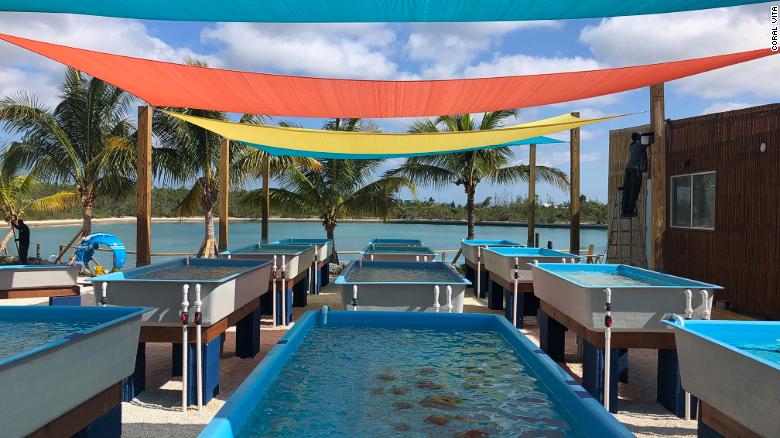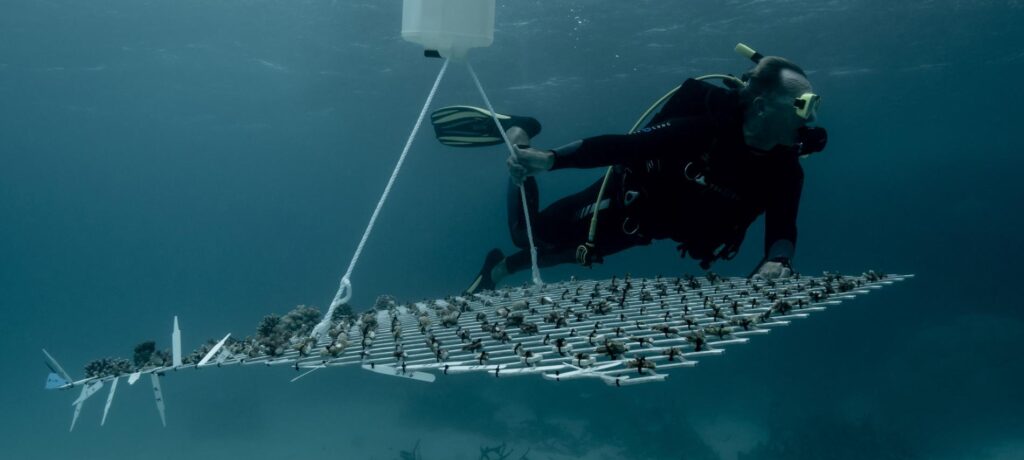Thirty miles off the coast of Queensland, Australia, a small piece of history was made last summer: Scientists transplanted hundreds of nursery-grown coral fragments onto the beleaguered Great Barrier Reef. The process itself is not new—coral transplants have been used to help restore damaged reefs for decades. What’s new is that it’s happening on the world’s largest reef, an icon of marine life that has been dubbed one of the seven wonders of the natural world.
Coral Vita uses a technique called micro-fragmentation which involves removing coral fragments from the ocean and breaking them into tiny pieces. This stimulates tissue growth and allows fragments to grow into clones at up to 50 times the normal rate in land-based nurseries, before they are planted back into the ocean.
According to Teicher and Halpern, this new method enables them to scale up previous restoration efforts, which have so far focused on reviving coral colonies underwater.
Teicher said traditional coral farming was too slow and restrictive as it only allowed for the restoration of fast-growing reefs.
“Underwater coral nurseries struggle to scale to counter global degradation and are jeopardized by events like storms, fishing accidents, and bleaching events,” he added.
Coral Vita is a commercial business, which sells “restoration services to customers who depend on reefs’ tourism, fisheries, and coastal protection benefits”, including governments, conservation groups and insurance companies, Teicher explained.




































































